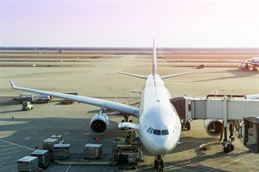
Budapest’s Ferenc Liszt International Airport clocked up nearly 15% growth in its cargo traffic last year, the third consecutive year of double-digit growth for the Hungarian gateway. Much of this has been driven by steps taken to entice integrators and international freighter operators, but management is also reaching out to airports in other parts of the world to develop traffic.
At the Belt and Road Forum in Beijing in April, executives of the airport signed a collaboration agreement with Xi’an Xianyang International Airport. The objective is to develop passenger and cargo traffic between the two cities, which should help Budapest cement its role as a growing European gateway for international airfreight flows.
Budapest is on course to sign another collaboration agreement with Zhengzhou International Airport when a delegation from Henan visits the Hungarian capital.
Elsewhere airports are also banding together in order to stimulate traffic. A few days before the Hungarian delegation headed for China, Houston Airport System (which manages the US city’s three airports) signed an agreement with Cabo Frio Airport in Brazil that aims to establish a pipeline of air cargo between two of the largest oil and gas clusters in the Americas.
The pair seek to develop business opportunities together that should boost cargo flows between them and ultimately prompt the launch of a direct freighter connection. To that end, they intend to identify potential partners, clients and products and share knowledge and experiences that can bring about new business opportunities.
The focus on a particular industry segment, such as the energy sector, is becoming more prominent, although general agreements to stimulate freight traffic are still continuing. Just like on the airline side, the pharmaceutical industry has been a particular target for airports seeking to develop flows with other points on the globe.
Brussels Airport company, which pioneered the CEIV concept for pharmaceuticals, has been very active on this front. In late March it signed an MoU with Montevideo Airport to build up a pharma corridor linking the Belgian gateway with the Uruguayan capital, which has ambitions to become a key distribution point for pharma traffic in South America.
Three months earlier Brussels teamed up with Hong Kong International Airport (HKIA) to set up a pharma corridor for temperature-sensitive medicines. With both airports having obtained CEIV certification, they can guarantee that such shipments will be handled end-to-end in strict compliance with CEIV standards.
Their move was borne out of the Pharma.Aero initiative, which was formed by Brussels and Miami International Airport in the spring of 2017 with a mission to foster collaboration between CEIV-accredited airports.
“With Pharma.Aero our focus has expanded to cover end-to-end and lane solutions. This cooperation with HKIA for a dedicated pharma lane is a first but important step in creating specialized, dedicated pharma corridors,” said Steven Polmans, head of cargo and logistics, strategic development of Brussels Airport Company.
Other airports are looking to follow suit. “We’ve had some preliminary talks with airports that also have CEIV certification,” reported John Ackerman, executive vice-president, global strategy and development at Dallas Fort Worth International Airport.
Last October he signed an MoU with Aeroports de Paris Group to develop air cargo traffic between Texas and the French capital. “We have freight to Paris anyway, but we’re zeroing in on some trade lanes that we think we can develop,” he said, citing oil and gas traffic as well as luxury goods. Louis Vuitton has established a manufacturing plant south of the airport, he added.
Over in Atlanta Elliott Paige, director of air service development, is working on measures to boost cargo traffic between Atlanta’s Hartfield Jackson International Airport and Amsterdam Airport Schiphol. In 2017 Atlanta and the Netherlands signed an MoU for trade and investment collaboration, which includes plans to build a trade and data logistics corridor.
“We’ve got the SkyTeam partners on board. Both Delta and KLM see benefits in this,” Paige said.
He has plans to expand the concept to other regions. “Once we get going, I’d like to replicate this with others, particularly in China. China is the second-largest trading partner for Georgia,” he said.
Miami International Airport, one of the two founders of the Pharma.Aero scheme, has not formalized any agreements with other airports – on pharmaceuticals or other cargo flows – but it is intensifying its collaboration with overseas partners.
“We have a close working relationship with Singapore,” remarked Emir Pineda, manager of aviation and trade logistics. “We also work with Hong Kong and Narita, with Incheon to a lesser extent. We try to develop closer relationships with airports in China.”
The Columbus Regional Airport Authority has also trained its sights on China, reported chief commercial officer David Whitaker. Columbus, which oversees freighter gateway Rickenbacker International Airport, has a collaboration agreement with Zhengzhou, but this has yet to produce a regular connection.
“We’ve been working closely with them,” said Whitaker. “We have some similarities. Both are mid-country and there’s a lack of congestion.”
Rickenbacker has been a major import gateway for large East Coast retailers but it is also pursing e-commerce flows with efforts to establish expedited customs clearance. For Rockford, which bills itself as an uncongested alternative to Chicago O’Hare, e-commerce is a natural, as it hosts a major regional UPS hub. Ken Ryan, the airport’s cargo director, said that Rockford has a strong partnership in place with Leipzig airport, the European hub of DHL and a major gateway for Volga-Dnepr.
“We aim to develop a lane between Leizpig and Rockford,” he said.
By Ian Putzger
Air Freight Correspondent | Toronto




